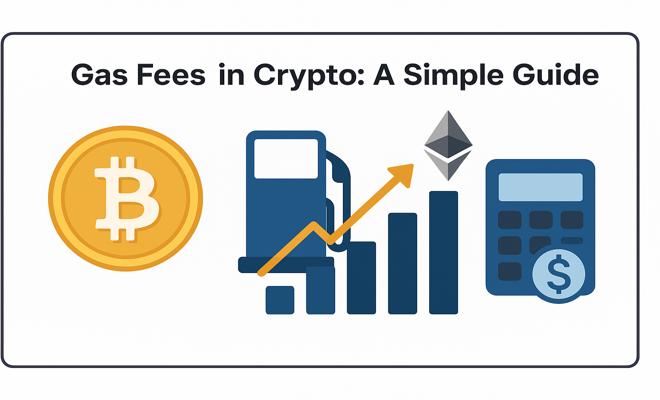
Gas Fees in Crypto: A Simple Guide
Gas fees are the small transaction charges you pay to use a blockchain network. They are like tolls you pay when driving on a highway — a fee to keep the system running smoothly and securely. These fees go to the miners or validators who work hard to confirm and add your transactions to the blockchain.
In popular blockchains like Ethereum, gas fees are measured in Gwei, a tiny fraction of the cryptocurrency Ether (ETH). These fees don’t stay the same — they change based on how busy the network is and how complicated your transaction is.
⛽️ How Do Gas Fees Actually Work?
Every time you send crypto or interact with a smart contract, you pay a gas fee. This fee does two main things:
- Rewards miners or validators for using their computing power to process transactions.
- Keeps the network safe by making it expensive to flood the network with fake or spam transactions.
You set two important values when you make a transaction:
- Gas Limit: The maximum amount of gas you’re willing to spend.
- Gas Price: How much you pay per unit of gas.
The total gas fee you pay is:
Gas Fee = Gas Limit × Gas Price
If you set your gas price too low, your transaction might take a long time or never get confirmed. If you pay more, your transaction gets faster—but you might spend more than necessary.
📊 Why Do Gas Fees Change So Much?
Gas fees aren’t fixed because they depend on many things, like:
- Network Traffic: More users trying to send transactions at the same time means higher fees.
- Transaction Complexity: Sending simple crypto costs less than running complicated smart contracts.
- Base Fee: Since Ethereum’s upgrade called EIP-1559, a base fee is burned (destroyed) and changes depending on demand.
- Tips (Priority Fees): You can add extra money to encourage miners to process your transaction faster.
🔗 How Different Blockchains Handle Gas Fees
Not all blockchains use gas fees the same way:
- Ethereum: Popular but known for higher fees, especially when busy.
- Bitcoin: Fees depend on transaction size rather than computational work.
- Solana & Avalanche: Designed for speed and low fees.
- Binance Smart Chain: Lower fees but more centralized control.
💡 Tips to Pay Less Gas Fees
- ⏰ Make transactions during off-peak hours when fewer people are using the network.
- ⚡ Use Layer 2 solutions like Arbitrum, Optimism, or zkSync that handle transactions faster and cheaper.
- 🔗 Batch multiple transactions together if possible to save on fees.
- 🌐 Try alternative blockchains with lower fees for similar services.
🧠 What Is EIP-1559 and Why It Matters
In August 2021, Ethereum introduced an important update called EIP-1559. This change:
- Burns a portion of the fees (called the base fee), reducing the total ETH supply over time.
- Lets users add tips to speed up their transactions.
- Makes gas fees easier to predict and less likely to be manipulated.
📉 Real-Life Examples of Gas Fee Changes
- During the 2021 NFT craze, Ethereum gas fees sometimes shot above $200 per transaction.
- On Layer 2 platforms, similar transactions can cost less than $1.
- Bitcoin transaction fees vary from just a few cents to around $20 depending on network load.
🛠 Useful Tools to Track and Estimate Gas Fees
Here are some trusted websites where you can check current gas prices:
- Etherscan Gas Tracker
- ETH Gas Station
- GasNow
- Fees.wtf (for personal gas usage)
🧩 What’s Next for Gas Fees?
The future looks promising with several advancements underway:
- Ethereum 2.0: Moving to proof-of-stake and sharding promises to lower fees a lot.
- Rollups: These Layer 2 solutions are growing fast, making transactions cheaper and faster.
- New protocols: More efficient blockchains are pushing the space to innovate continuously.
📚 Final Thoughts
Gas fees might seem confusing or frustrating, but they are a key part of keeping blockchain networks secure and efficient. They reward the people who maintain the system and stop bad actors from overloading it.
By learning how gas fees work and using smart strategies, you can save money and enjoy smoother transactions. And as technology improves, gas fees will become easier to handle for everyone.
✅ For more simple, beginner-friendly crypto guides and blockchain tips, stay connected with BitMedia24. We’re here to help you navigate the crypto world with confidence! 🚀